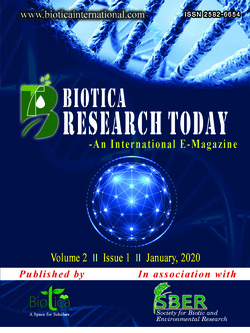
Silk Milk - An Ecofriendly and Innovative Method of Farming for Value Addition to Sericulture
P. Sudhakar*
Regional Sericultural Research Station, Central Silk Board (CSB), Ananthapur, Andhra Pradesh (515 001) India
B. Vijaya Naidu
Regional Sericultural Research Station, Central Silk Board (CSB), Ananthapur, Andhra Pradesh (515 001) India
K.P. Kiran Kumar
Regional Sericultural Research Station, Central Silk Board (CSB), Ananthapur, Andhra Pradesh (515 001) India
Pankaj Tewary
Central Sericultural Research and Training Institute (CSRTI), CSB, Mysore, Karnataka (570 008), India
DOI: NIL
Keywords: Animal husbandry, Mulberry cultivation, Silkworm rearing
Abstract
Animal husbandry combined with several agricultural farming proved to be beneficial and economically viable venture. Similarly, mulberry (Morus alba L.) a perennial plant is cultivated as seasonal plant synchronizing 5 harvests in a year exclusively cultivated for feeding silkworm (Bombyx mori L.). A total of 60-70 MT of leaf or more than 100 MT of biomass will be harvested annually from one hectare of mulberry garden and used for silkworm rearing. Almost 50% of the harvested biomass will be leftover as waste during the process of harvesting mulberry shoots and feeding of silkworm. Further, after the harvest of mulberry garden around 25-30% of the thin branches and leftover unsuitable mulberry biomass will remain in the garden. All these waste mulberry material is most suitable for the cattle and sheep feeding. On interaction with farmers have expressed the increase of milk yield to a tune of twofold compared to the weed gracing cattle. In the present study an attempt was made to study the impact of feeding the leftover mulberry biomass to the animal husbandry among the sericulture farmers.
Downloads
not found
Reference
Dandin, S.B., Jayaswal, J., Giridhar, K., 2003. Handbook of Sericulture Technologies (Recommended for South Indian States). Published by Central Silk Board, CSB Complex, BTM Layout, Madivala, Bangalore, Karnataka. p. 259.
Shankar, M.A., Shivakumar, H.R., 2000. Drip and fertigation to the mulberry. Technical Bulletin. Dryland Agriculture Project & Department of Sericulture, University of Agricultural Science, GKVK, Bangalore, Karnataka, India. pp. 1-63.
